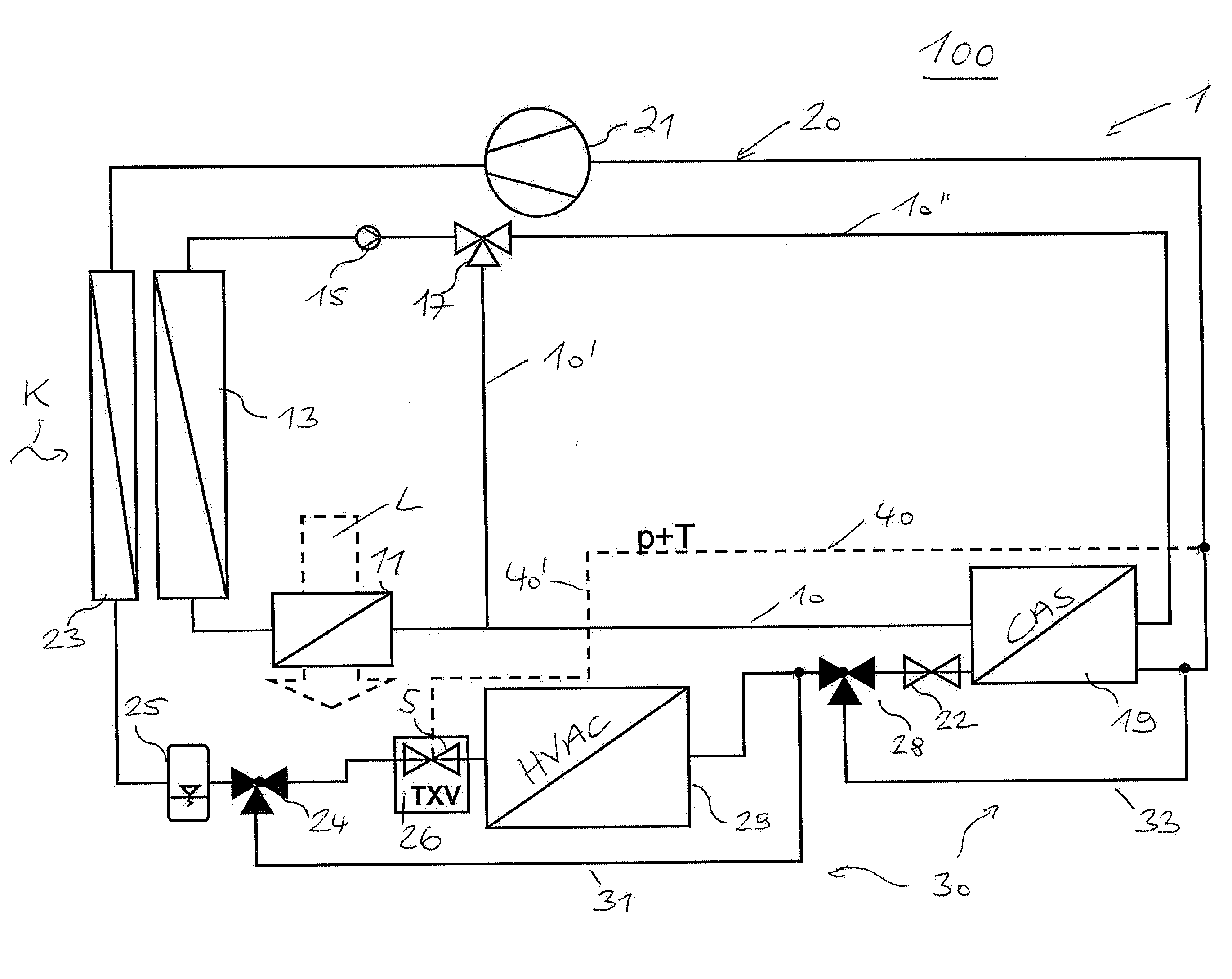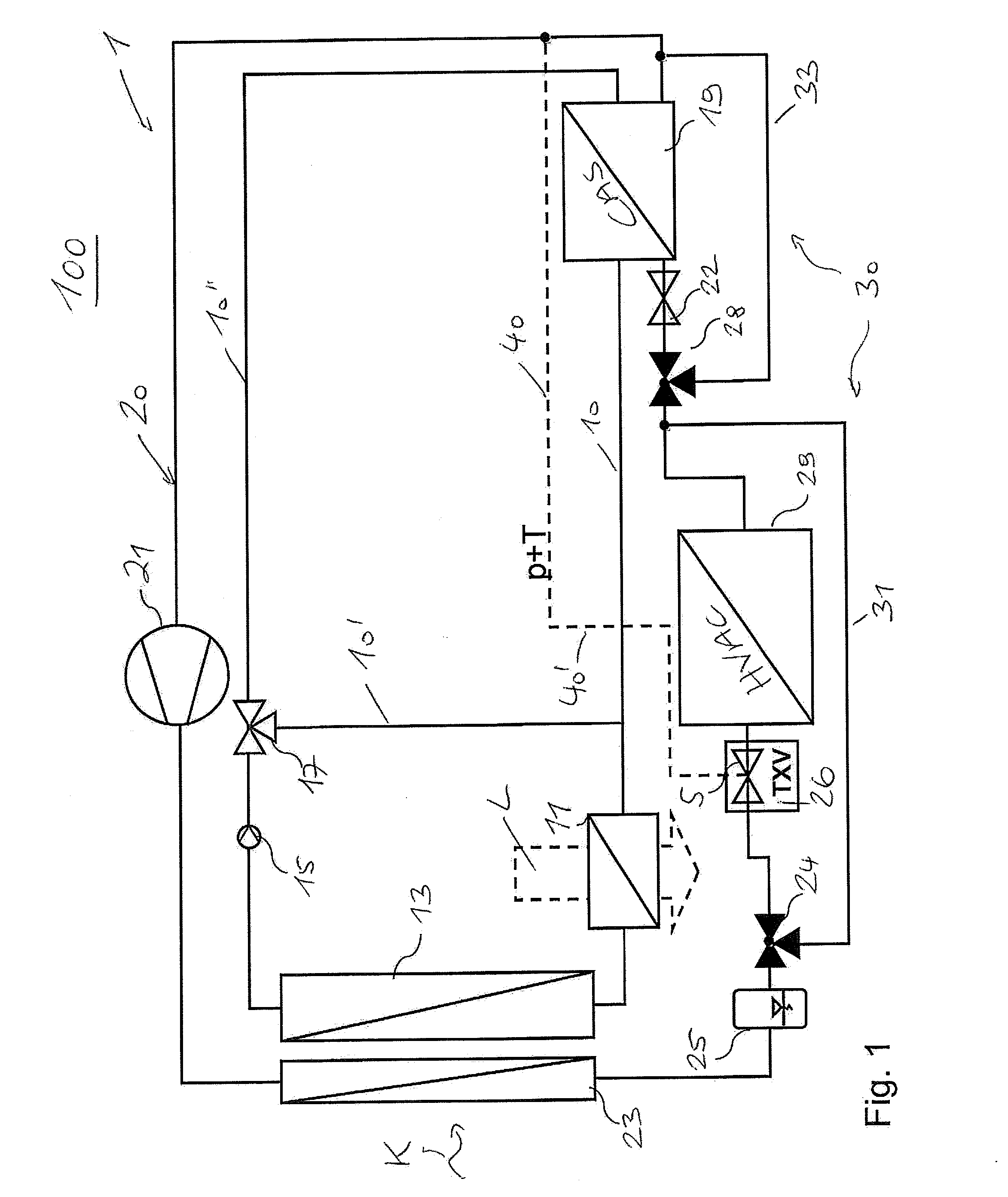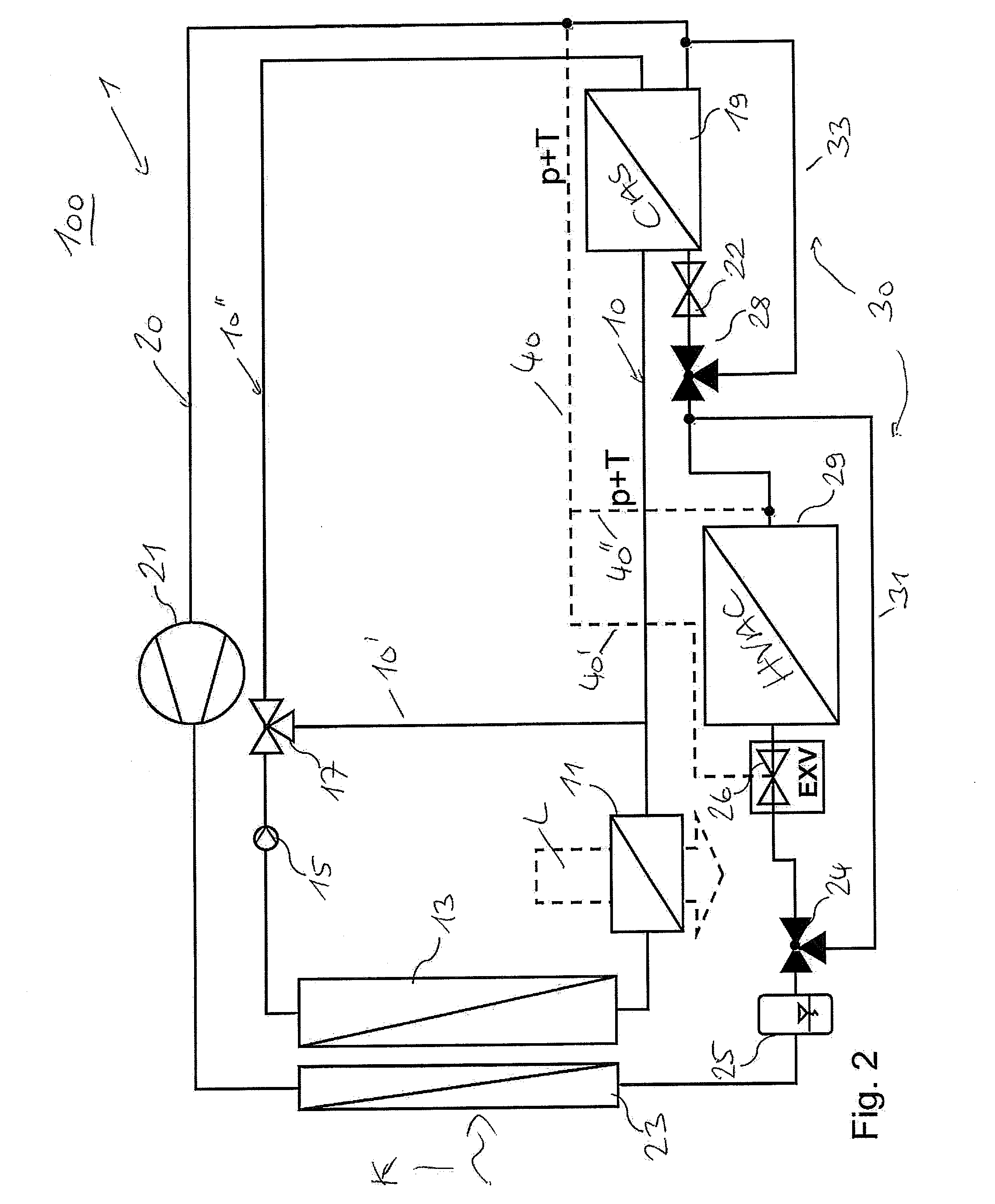Device for cooling a coolant, circuit for charging an internal combustion engine, and method for cooling a substantially gaseous charging fluid for charging an internal combustion engine
a charging circuit and charging device technology, applied in the direction of machines/engines, refrigeration components, lighting and heating apparatus, etc., can solve the problems of sensitive reaction of fuel consumption with lower output of internal combustion engines, the limit temperature is reached more quickly, etc., and achieve the effect of effective utilization and effective supply of charge fluid cooling outpu
- Summary
- Abstract
- Description
- Claims
- Application Information
AI Technical Summary
Benefits of technology
Problems solved by technology
Method used
Image
Examples
Embodiment Construction
[0041]A circuit 100, represented symbolically in the present case, for charging an internal combustion engine, in particular a motor—preferably gasoline-fueled—with a charging fluid L has, according to the concept of the invention, a device 1 that is coupled through a heat exchanger 11 for the charging fluid L, and that is designed for cooling a coolant, which in turn is provided for cooling the charging fluid for charging the internal combustion engine. FIG. 1 through FIG. 3 show embodiments of the first variant, in which the first and second evaporators 29, 19 are connected in a series arrangement. FIG. 2 and FIG. 3 show additional variations of such a circuit 100, with a suitably modified device 1, wherein, for the sake of simplicity, the same reference symbols are used for identical parts or features, or parts or features having the same function. The charging fluid L can be understood to be, in particular, a substantially gaseous charging fluid—for example a charge air and / or a...
PUM
 Login to View More
Login to View More Abstract
Description
Claims
Application Information
 Login to View More
Login to View More - R&D
- Intellectual Property
- Life Sciences
- Materials
- Tech Scout
- Unparalleled Data Quality
- Higher Quality Content
- 60% Fewer Hallucinations
Browse by: Latest US Patents, China's latest patents, Technical Efficacy Thesaurus, Application Domain, Technology Topic, Popular Technical Reports.
© 2025 PatSnap. All rights reserved.Legal|Privacy policy|Modern Slavery Act Transparency Statement|Sitemap|About US| Contact US: help@patsnap.com



